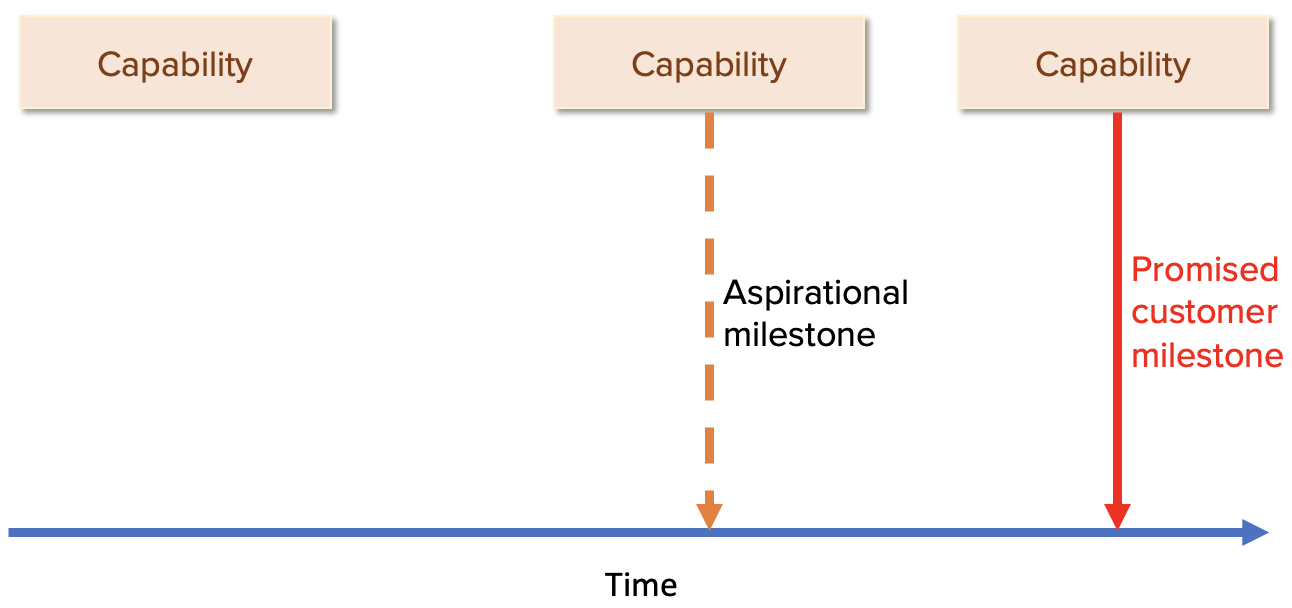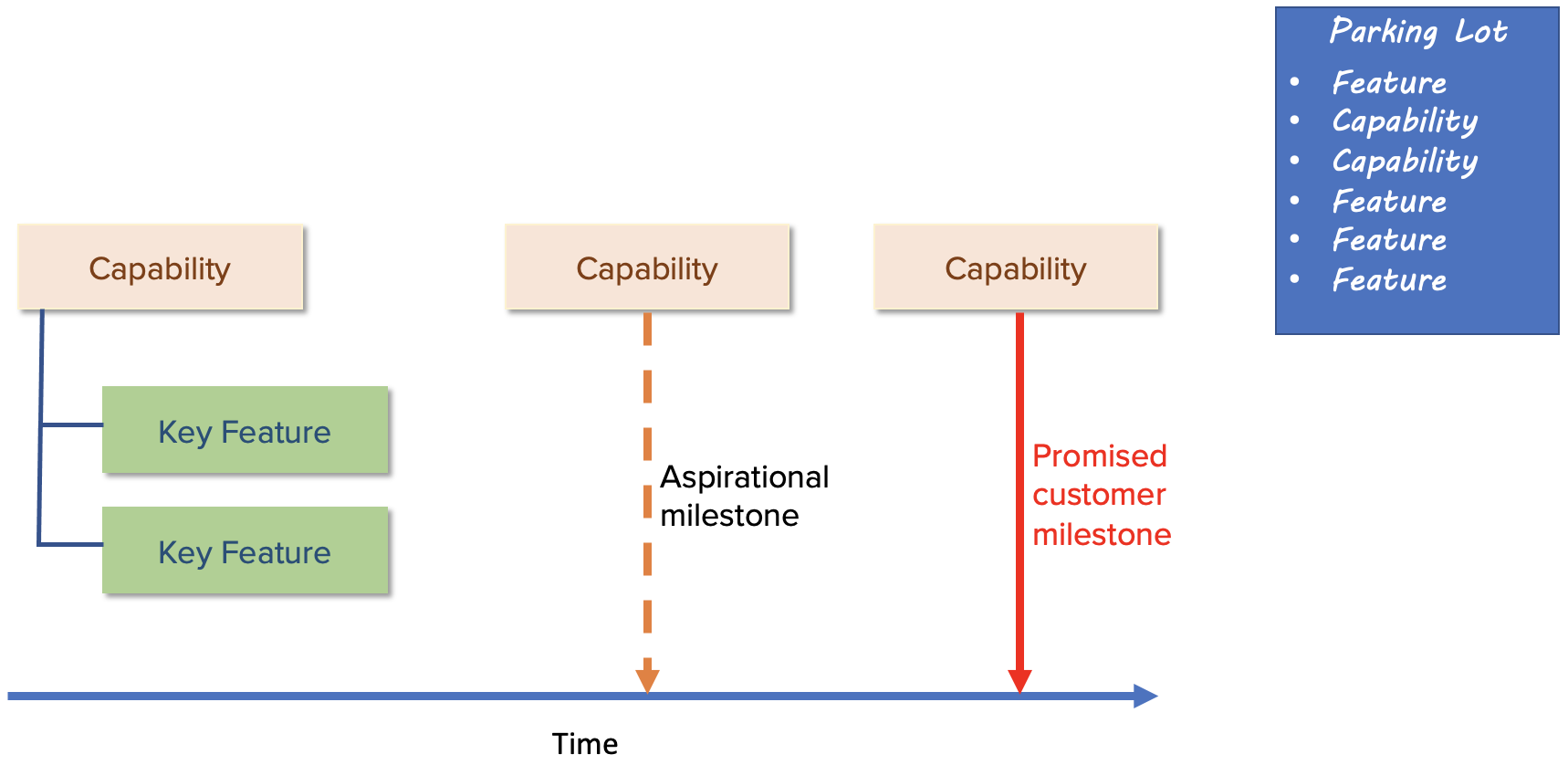Defining a Roadmap
A roadmap is a high level plan for getting something done.
A roadmap identifies the capabilities that will be built over time, mapped over a timeline. It therefore shows key time-based milestones for when those capabilities are needed. These milestones can be aspirational, or commitments, and it is important to distinguish between the two.
The features that make up each capability can also be shown, but only those that have been decomposed. Thus, one can use a rolling wave approach, focusing on the features of the most urgent capabilities.
Precursors can be added if desired.
Capabilities and features that have been proposed but not yet prioritized can be added to a parking lot, so that they don’t clutter the roadmap.
Related Topics
This approach is flexible and easy to change because it is uncluttered by detail, and aspirational milestones are not constraining.
It is value-based, in the sense that one puts the most important capabilities first.
It can account for risk in the same way as a backlog, by factoring risk into the value calculation.
It does not show effort, but it does show time. Showing time is a huge advantage.
Also, by separating unprioritized items into a separate parking lot, the roadmap is uncluttered. Backlogs often become an endless pit of ideas that become irrelevant over time.
Benefits of Roadmaps:
Flexible – easy to change.
Value-based.
Include precursors.
Account for risk.
Show time.
Does not show effort.




